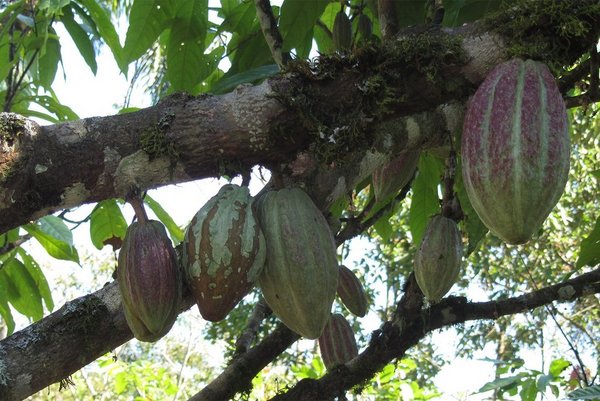- Share this article
- Subscribe to our newsletter
Ecosystem services are not constrained by borders
Scientists at the German Helmholtz Centre for Environmental Research (UFZ) and the German Centre for Integrative Biodiversity Research (iDiv) show in a recent study, published in the journal Global Environmental Change, how interregional ecosystem service flows can be identified and quantified.
"Ecosystem services are not constrained by borders," says Professor Aletta Bonn, who works on ecosystem services at the UFZ and iDiv. "For example, one country may benefit from agricultural products originating from other continents or flood protection provided by floodplains in a neighbouring country."
These close links between distant regions arising from ecosystem services are known as telecoupling. Understanding these flows can help to recognise the value of intact nature, identify global drivers of biodiversity loss or soil erosion in distant regions, and develop measures for more sustainable management.
How can ecosystem services be balanced between countries?
According to Bonn, it is important to understand the interlinkages and the environmental costs caused by domestic consumption of ecosystem services in other countries. This information can then be used in political decisions, such as fair trade standards, environmentally and socially acceptable certification and financial compensation measures.
But how can ecosystem service flows be identified, quantified and ultimately balanced between countries? The researchers investigated these issues in their recent study. As part of this, they examined the extent to which Germany uses ecosystem services that are provided in other countries.
"In previous work, we had already developed a conceptual framework for quantifying interregional ecosystem service flows," says Bonn. "Here, we distinguished four types of flows which were examined for Germany in more detail."
The example of cocoa imports into Germany
The scientists assessed trade flows using cocoa imports as an example and their impact on biodiversity in the producing countries. It turned out that approximately 85 per cent of imported cocoa comes from only five mainly West African countries– Ivory Coast, Ghana, Nigeria, Cameroon and Togo. “Significant impacts on biodiversity are considered for Cameroon and Ecuador from cocoa trade with Germany," says Dr Janina Kleemann, a former UFZ researcher who is now at Martin Luther University Halle-Wittenberg.
In the "migratory species" category, the scientists investigated the importance of migratory birds for German agriculture. "Our results indicate that Africa’s tropical and subtropical climate zones provide a habitat for the majority of migratory bird species that make an important contribution to pest control in German agricultural landscapes," explains Kleemann.
Ecosystem services associated with flood protection are assigned to the "passive biophysical flow" category. Here, the researchers concluded that Germany benefits by almost two-thirds from flood regulation provided in other countries’ floodplains, and in return also exports around 40 per cent of flood regulation for downstream neighbouring countries such as the Netherlands.
In the "information flows" category, the loan of a Chinese giant panda to Berlin Zoo served as a case study. The research team highlighted the political, economic, scientific and cultural aspects of this exchange for the relationship between Germany and China.
"To place our study on a sound basis, we collaborated in an interdisciplinary, international team of ecologists, economists, geographers and social scientists," explains Bonn. The UFZ study is one of the first studies to identify, systematically quantify and assess several interregional ecosystem service flows for a specific country using examples.
Awareness and understanding of these flows is the first step towards fairly balancing ecosystem services use and sustainable resource management. "When we know how and to what extent we influence global biodiversity with our consumption patterns and international trade, we can make better decisions regarding individual and national consumption of resources and develop adequate measures for sustainable management," says Bonn. "Our study clearly demonstrates that countries such as Germany bear a global responsibility to protect and conserve biological diversity world-wide."
(UFZ/wi)
Publication:
Janina Kleemann, Matthias Schröter, Kenneth J. Bagstad, Christian Kuhlicke, Thomas Kastner, Dor Fridman, Catharina J. E .Schulp, Sarah Wolff, Javier Martínez-López, Thomas Koellner, Sebastian Arnhold, Berta Martín-López, Alexandra Marques, Laura Lopez-Hoffman, Jianguo Liu, Meidad Kissinger, Carlos Antonio Guerra, Aletta Bonn (2020): Quantifying interregional flows of multiple ecosystem services – A case study for Germany. Global Environmental Change 61, 102051; doi:10.1016/j.gloenvcha.2020.102051





Add a comment
Be the First to Comment